Canada’s beef producers can’t catch a break. The latest problem is beef import suspensions by China, South Korea and the Philippines sparked by the discovery of an atypical case of BSE found in Alberta. This setback is stacked upon problems related to the western Canadian drought, including forage shortages and high feedgrain prices. COVID-19 adds […] Read more
Tag Archives Drytimes

Farmers must prepare themselves for another world crisis
Will the freefall in the Turkish lira spark a global crisis? How about a Russian invasion of Ukraine? Or another clash between China and one of its neighbours or geopolitical rivals? What if the follow-up to the omicron version of COVID-19 is a variant equally transmissible but more lethal? There are all sorts of sparks […] Read more

Drought takes bite out of crop commissions’ bottom line
Drought is forcing Saskatchewan’s crop commissions to pull out their erasers and sharpen their pencils when budgeting for the 2021-22 fiscal year. “We realized that we needed to make significant adjustments to the budget we passed in June,” SaskCanola chair Bernie McClean told delegates attending the 2022 annual general meeting. A new budget was approved […] Read more
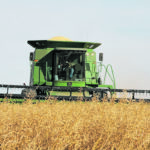
Mustard supply evaporates following drought
Simply put, 2021 was not a good year for mustard growers. The average yield was about 40 percent of normal and Canadian farmers only produced 50,000 tonnes of mustard seed — a fraction of the typical output. “It’s the smallest crop for decades… in Western Canada,” said Chuck Penner, owner of LeftField Commodity Research, who […] Read more
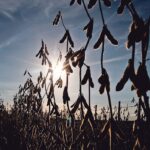
Argentina’s soybean crop at a crossroads
Argentina’s soybean crop is stressed and amid a stretch of extreme hot and dry weather. “We’re at a very important crossroads right now,” said Drew Lerner, president of World Weather Inc. There is no rain in the forecast until Jan. 17th and daytime highs will remain in the 34 to 43 C range until then. […] Read more
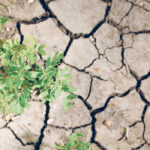
Organic crops may be more drought resilient
Like most farmers on the Prairies, the 2021 growing season was a struggle for Stuart McMillan, who manages Legend Organic Farms near Kamsack, Sask. Many crops on the 3,500-acre farm couldn’t handle the drought and extreme heat when many days reached 30-35 C, and yields were well below normal. “Our oats just took a kicking. […] Read more
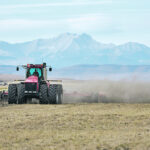
RDAR accepts new research proposals
Alberta’s Results Driven Agriculture Research program is accepting research funding applications for projects that will allow Alberta’s agriculture sector to respond more effectively to drought conditions and extreme heat. There is no application deadline, but all projects that receive funding are to be completed by December 31, 2022. Last summer, Alberta’s producers experienced significant challenges […] Read more
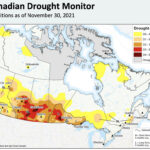
Precipitation eases drought worry
Varied precipitation is maintaining or alleviating drought conditions in some areas of the Prairies, according to the latest drought map from Agriculture Canada’s Canadian Drought Monitor. The assessment for the period ended Nov. 30 showed few areas of worsening drought on the Prairies with conditions either staying the same or improving in one drought classification […] Read more
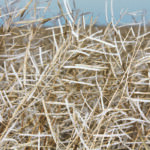
Shattered to the core of the pod
Canola producer groups and industry work toward a tool to help manage harvest losses from Prairies’ most valuable crop
Nicolea Dow found 2020 to be a particularly exasperating year for growing canola at her farm near Portage La Prairie, Man. Blistering summer heat and ill-timed rains meant green stems mixed with over-ripe plants whose pods had already burst, spawning growth of canola seedlings between the mature plants. Prolonged, high winds while the crop was […] Read more
Hay West receives more federal funding
Ottawa is committing $3 million to the Canadian Federation of Agriculture’s Hay West program to assist drought-plagued western ranchers get adequate feed following a devastating year for the industry on the Prairies. The announcement today from Agriculture Minister Marie-Claude Bibeau comes on top of $1 million the feds previously committed to the program to help […] Read more






